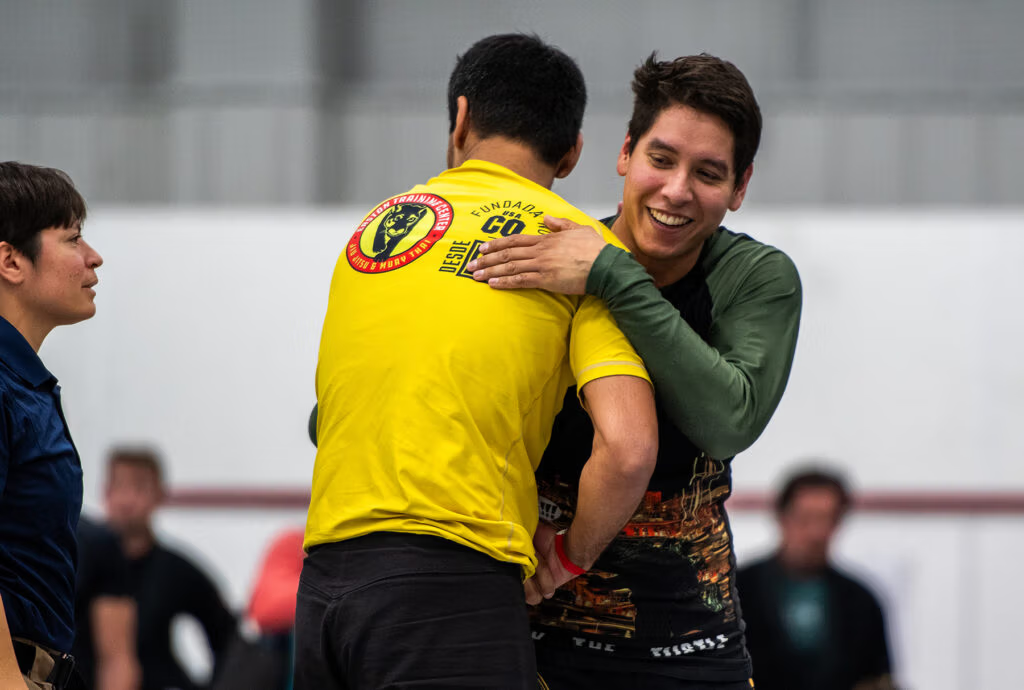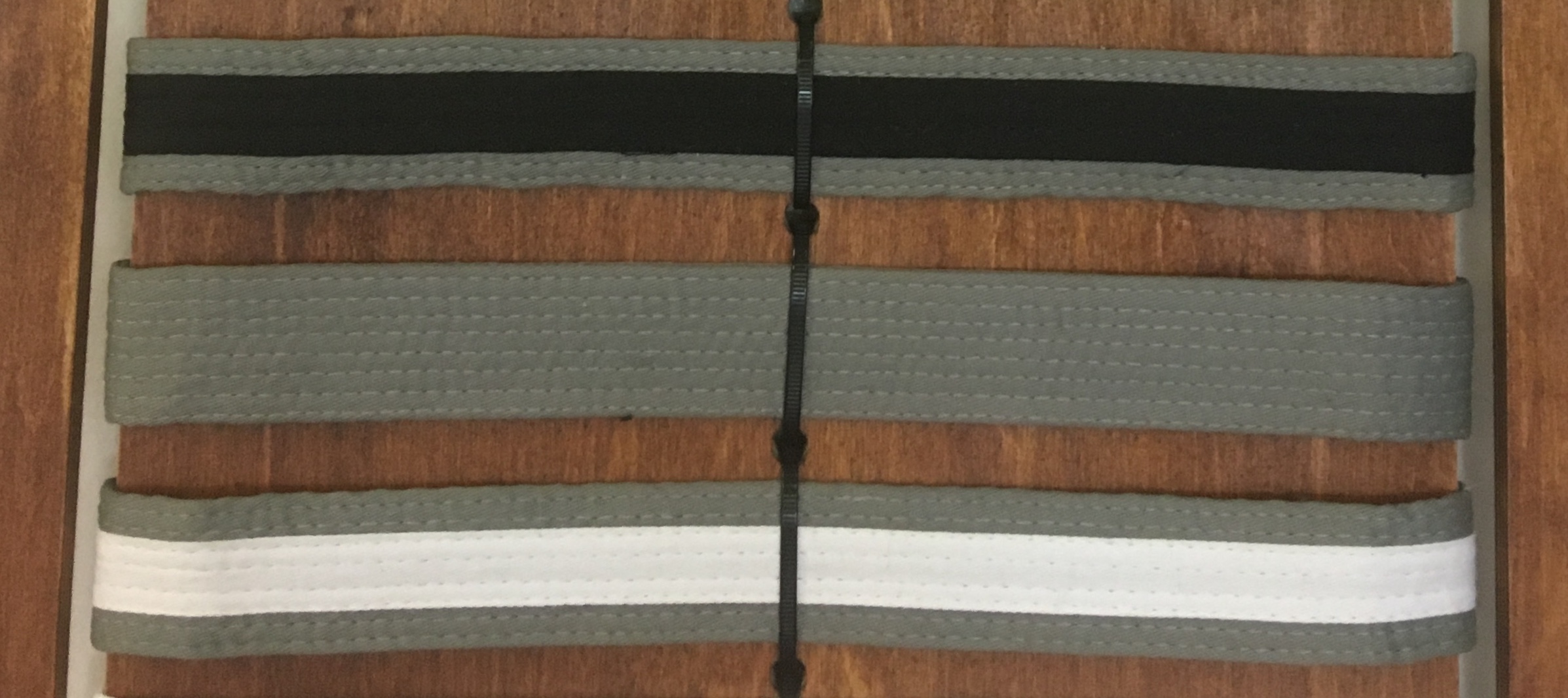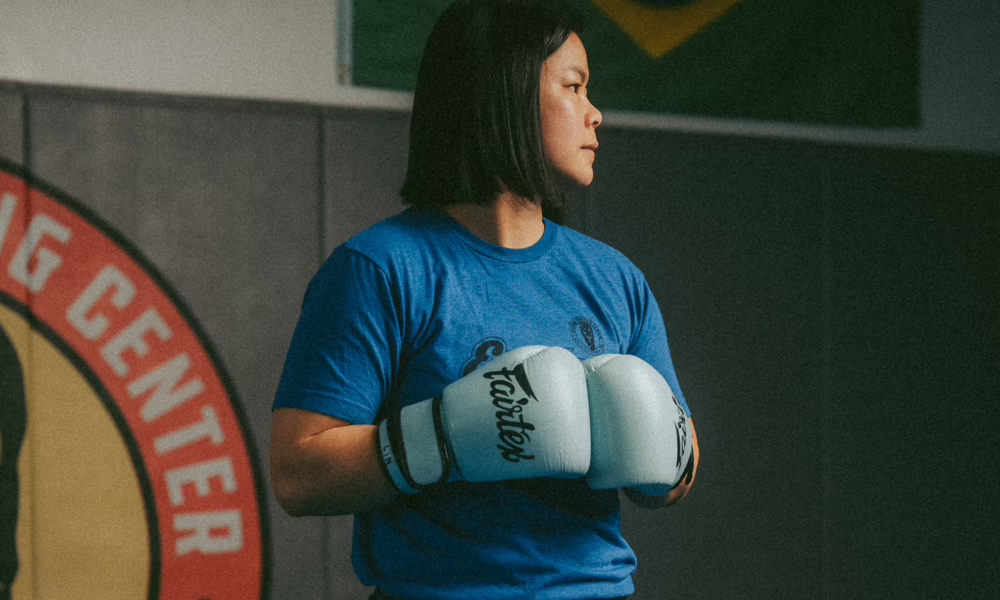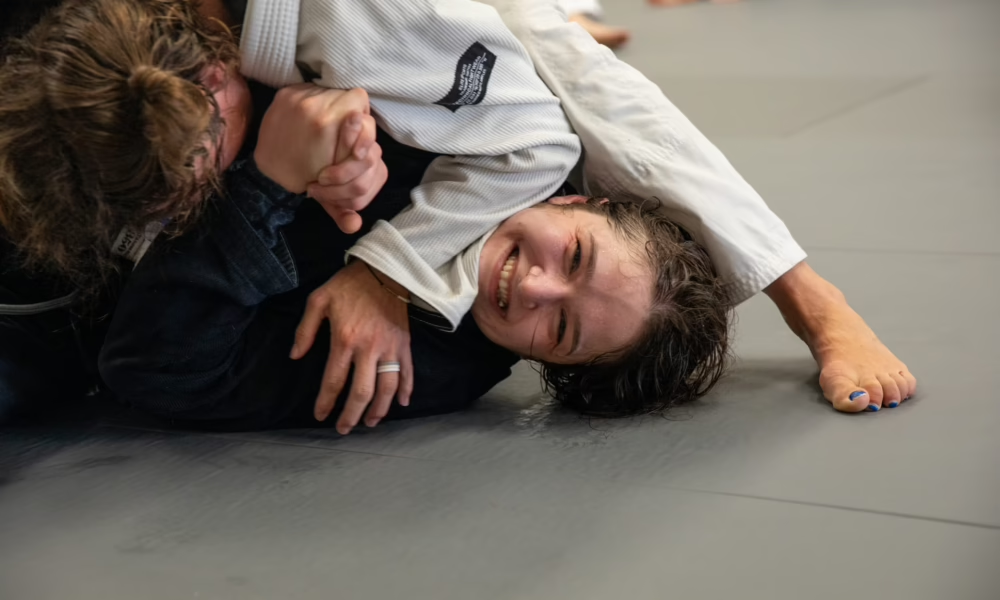While the adult belt system is fairly straightforward, adults often have questions about the kids belt system as they start enrolling their children in BJJ programs.
Easton Training Center follows the International Brazilian Jiu Jitsu Federation (IBJJF) belt system. The IBJJF is a nationally recognized governing body of Brazilian Jiu Jitsu that hosts many of the biggest Jiu Jitsu competitions in the world.
Their standardized kids belt system goes through ages four to 15. All students start at white and then move through the colors gray, yellow, orange, and green. Each color has 3 belt divisions: color-white, solid color, and color-black.
Every belt receives stripes as you work toward the next color. A new stripe gets considered once a student has completed at least eight classes, and it’s been at least a month since their last promotion.
Many factors go into the decision to promote – including focus, discipline, respect, and performance at school and home. Earning stripes ultimately comes down to the decision of your coach or professor, and they can delay it if needed.

White Belt
The white belt is given at the end of the first class after sign-up. Getting a white belt is greatly celebrated, every person on the mat once stood in the same spot and remembers it. Getting a white belt means first and foremost that you and your child are a member of the Easton family, and second that the other kids now know that your child can handle a little squish.
As a white belt, children will start to learn the basics of Jiu Jitsu, including keeping positions of control and escaping positions of danger. We also include weekly mat-chats that focus on behavior and how to handle ourselves on and off the mat.
During this time, the student will receive grades or “stripes” on their white belt, indicated with a piece of tape wrapped around the tail of the belt. If a child attends class regularly, they will typically earn a stripe every month.White belts require five stripes before graduating to gray-and-white belt. A student will spend at least 6 months as a white belt.
[BJJ In-House: Kids Inspired and Leveling Up]
Gray Belts (Gray-white, Solid Gray, Gray-black)
The gray belt group indicates that a child will now begin to focus more on playing offense. Gray belts focus on details and figuring out how to adjust moves against fighting opponents. Gray belts can also mean consideration for the intermediate class, with Coach’s approval.
Students attending intermediate classes must attend at least 16 classes before consideration for a stripe promotion. Gray-white belts earn 5 stripes and will spend at least 6 months at this belt before moving up to solid gray.
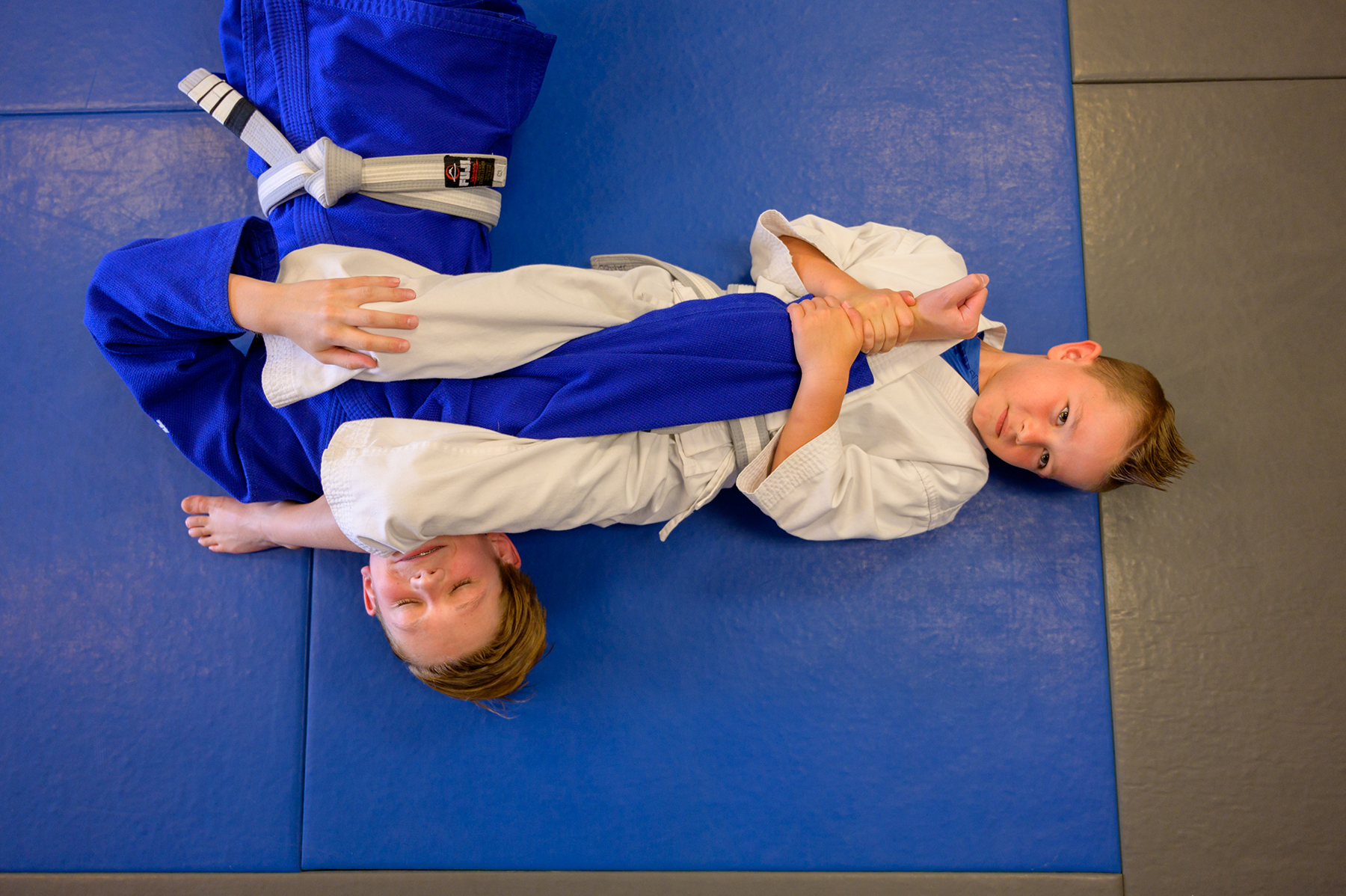
Once a child graduates to a solid gray belt, the belts are now worn for a longer period of time. Both solid gray and gray-black require 11 stripes to move forward. The first 4 stripes are indicated by white tape wrapped on the belt end, followed by 4 stripes of red tape, and finally 3 stripes that are the same color as the next belt. Students can expect to spend at least a year at each of these belts.
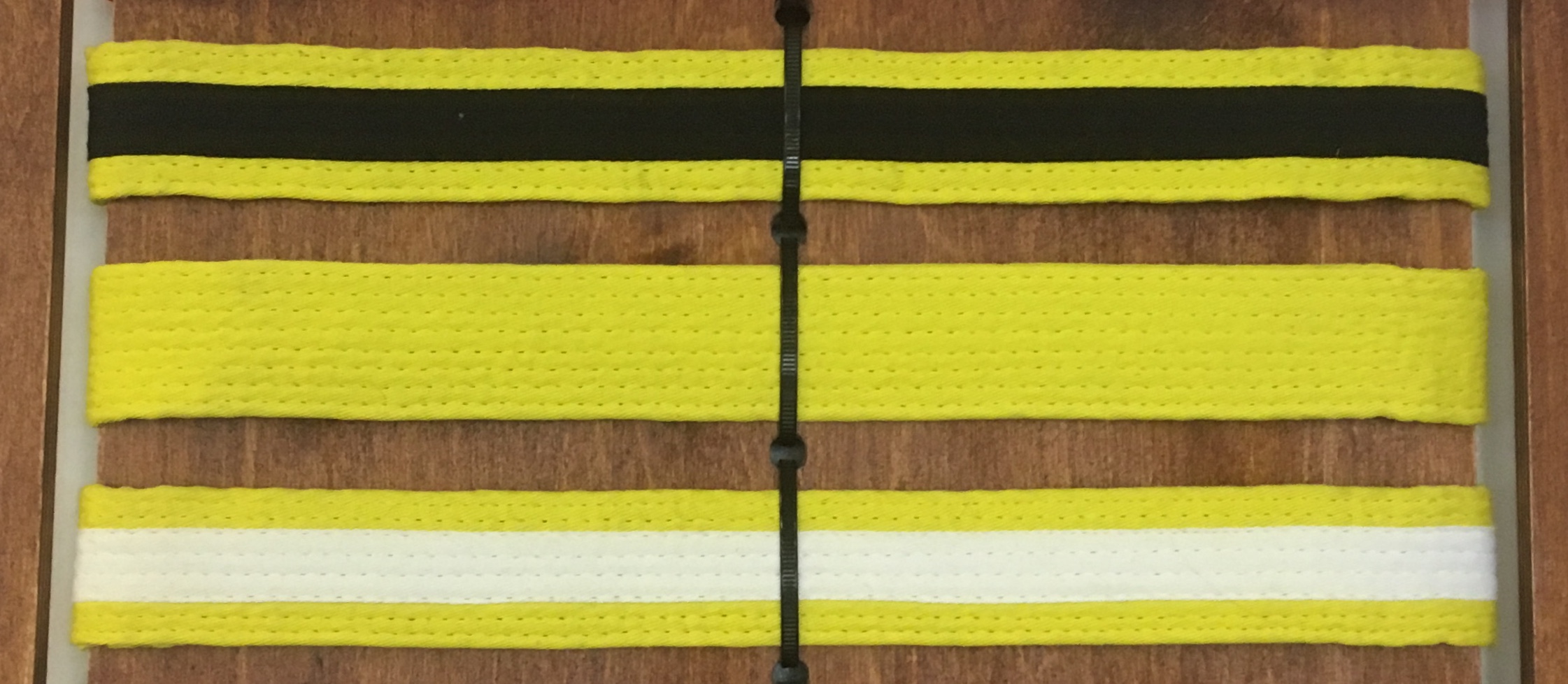
Yellow Belts (Yellow-White, Solid Yellow, Yellow-Black)
By the time a child earns the first belt in the yellow group (the yellow-and-white belt), they will have been training for at least 3 years. They’ve acquired a large number of tools in their grappling toolbox, and now they’ll begin to focus on putting all the pieces together.
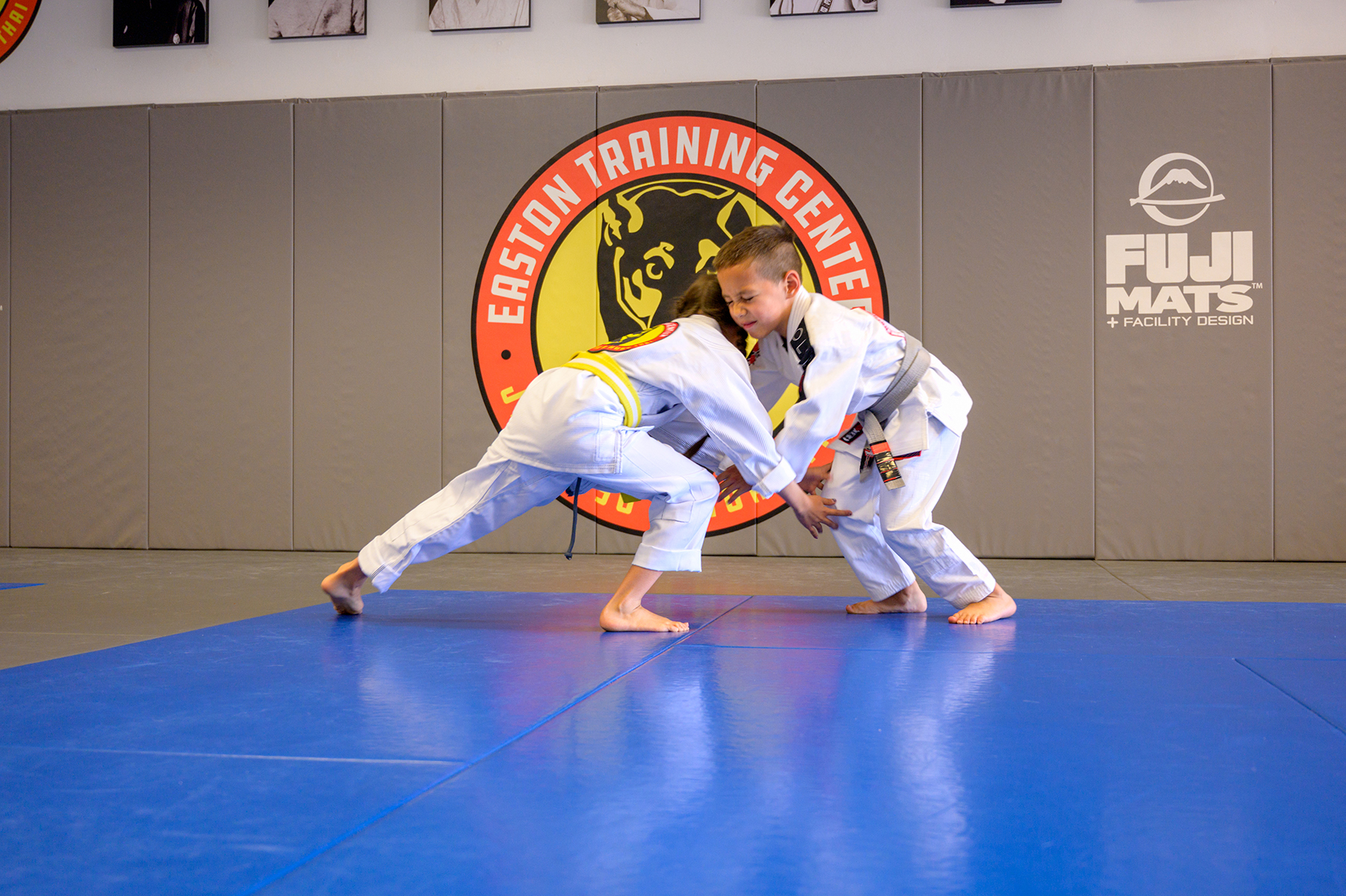
Yellow belts focus on flow, transitioning from move to move smoothly. They also begin to figure out their strategy and learn now to think several moves ahead. Yellow belts may also join the advanced class, with Coach approval.

Orange Belts (Orange-White, Solid Orange, Orange Black)
At the orange belt level, we consider children advanced. By this point, the student will have already achieved a very broad knowledge of Jiu Jitsu, and now focus on developing their own particular style or “game.”
Orange belt is the time to for students to figure out what moves work best for them and what positions they like to play from. Orange belts focus on continuing to develop strategy, learning how to perform their tactiques smoothly.
[What To Do When Your Little Tiger Has A Bad Tournament]
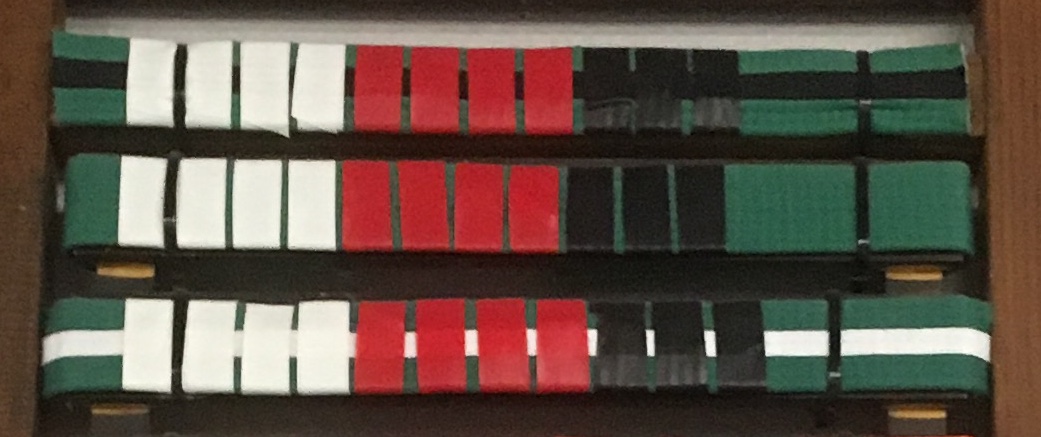
Green Belts (Green-White, Solid Green, Green-Black)
The Green belt group is the last belt color for children, with the Green-and-Black belt being the highest rank one can earn as a child. Green belt students have very advanced knowledge, and the focus of their training rests in sharpening their skills and fine-tuning their game.
It takes more than 10 years to earn a green-and-black belt, so this belt is typically only reached by students who start training at a very young age. This is because once a student reaches the calendar year of their 16th birthday, they are transferred into the adult belt system.
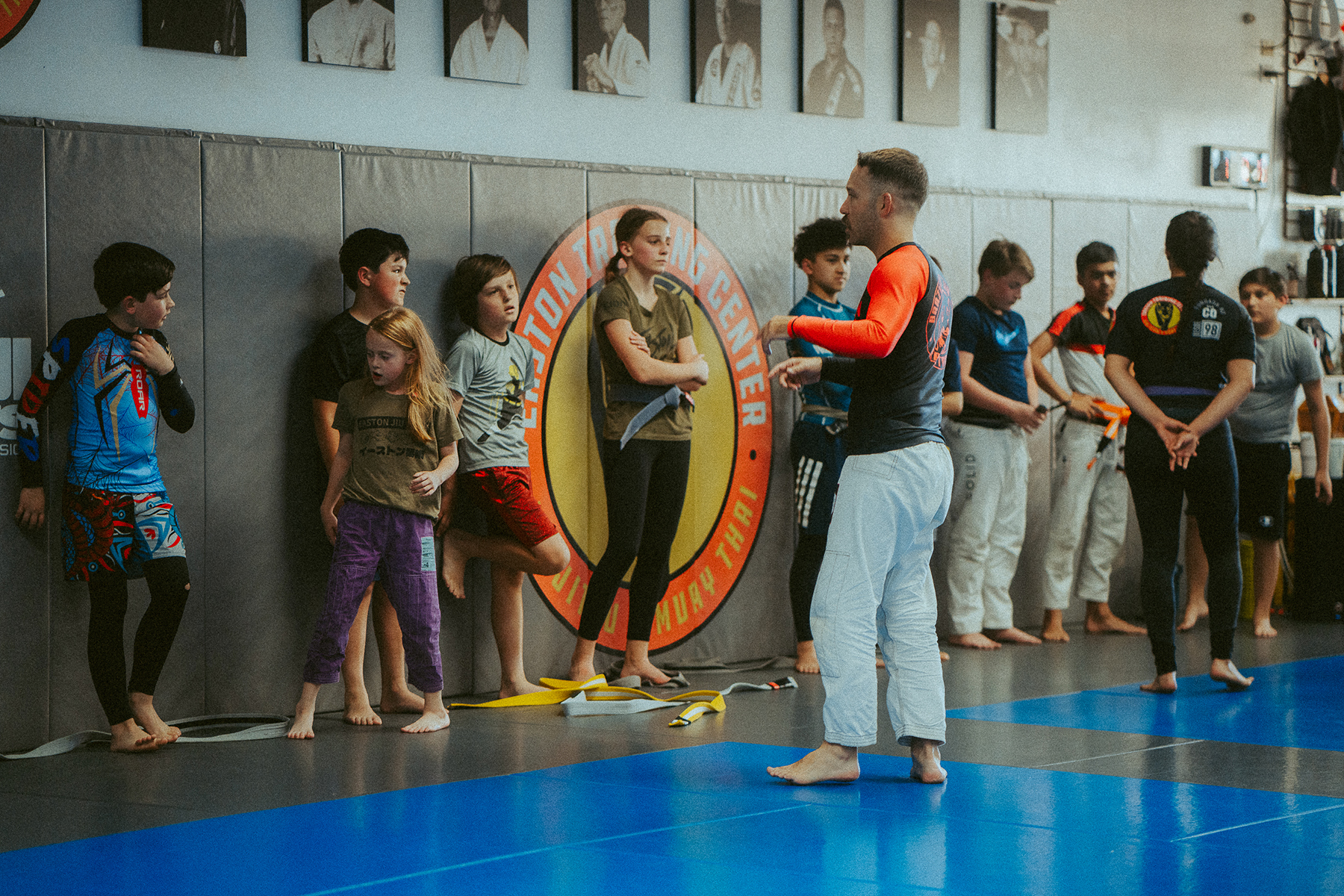
[Options To Help When Your Child Doesn’t Want To Train]
Transitioning to Adult Belts
At the age of 16, youth BJJ students will move into the adult belt system. If a student has shown the proper training, skills and experience, the coaches may decide to award them a blue belt. The blue belt is the second belt level in the adult belt system. Students with less experience will be transferred to a white belt in the adult belt system.
We hope this article helped you understand the IBJJF belt system for kids!


